5 Late-Season Waterfowling Secrets
Ducks and geese act differently in January than they do in October. These expert tips will help you improve your hunting success by adapting to changes in waterfowl behavior and habitat conditions
Ducks and geese act differently in January than they do in October. These expert tips will help you improve your hunting success by adapting to changes in waterfowl behavior and habitat conditions

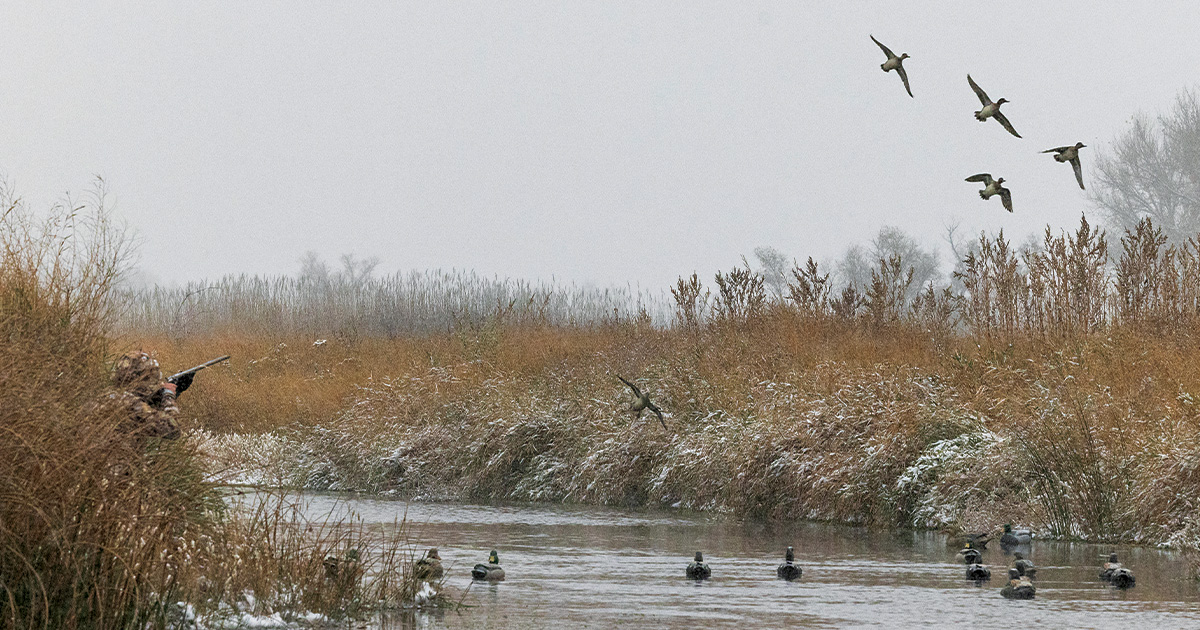
The closing weeks of the season are a mixed blessing for waterfowlers. After migrating thousands of miles from one end of the flyway to the other, ducks and geese have seen and heard it all in terms of decoys, blinds, and calling. Hunting tactics that were successful at the beginning of the season are often far less effective as highly educated waterfowl become more elusive and harder to fool.
But the final weeks of the season also offer unique opportunities for hunters who are willing to try something different. First, duck and goose numbers often reach their peak in southern states as the season draws to a close. Second, winter weather, limited food resources, and hunting pressure can force waterfowl to abandon established feeding and roosting patterns, which often benefits hunters, at least temporarily. We interviewed three veteran waterfowlers who specialize in hunting late-season ducks and geese. Their advice might help you put more birds in the bag during the final hunts of the year.
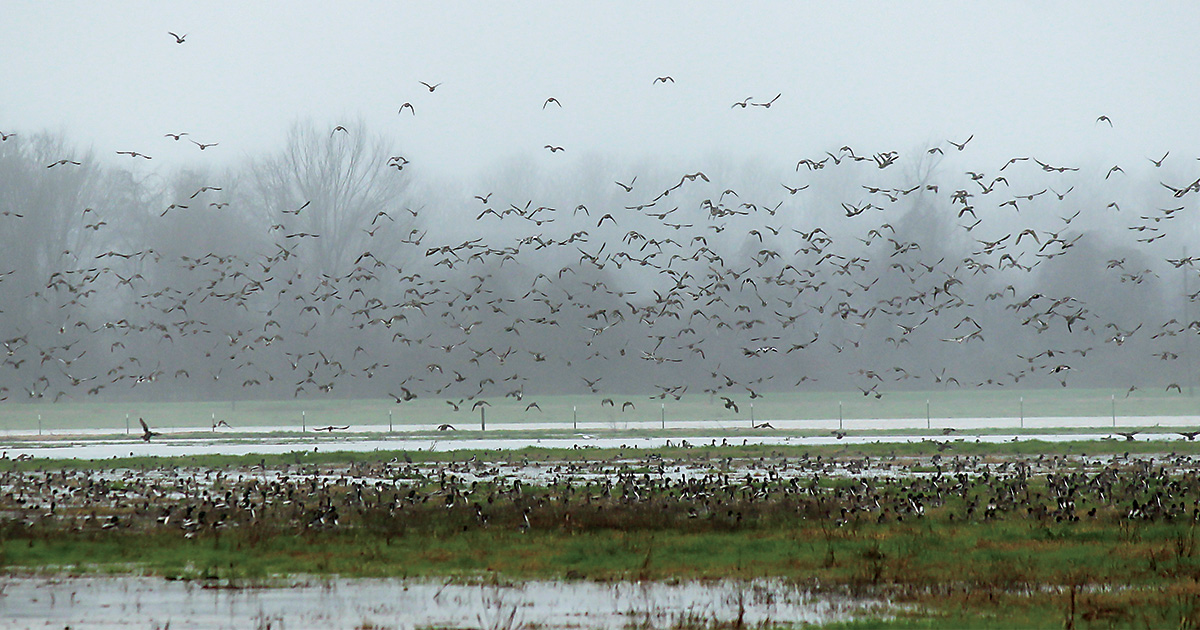
Heavy precipitation can create new feeding habitat in agricultural fields, providing fresh opportunities for hunters.
The Pacific Flyway’s most important waterfowl wintering area, the Central Valley of California, is almost always loaded with ducks and geese, but hunters in this region are not immune to late-season challenges. In particular, concentrations of dabbling ducks and geese can suddenly scatter to the winds after heavy rainfall creates new feeding habitat in harvested rice fields, explains Ryley Haugh, a guide with Merlo Waterfowl Company based near Durham. “A harvested rice field that hasn’t seen a duck all year can suddenly become the place the birds want to be,” he says. “You’ll see these little nooks and crannies and field edges with shallow water holding ducks and geese. The birds have a way of finding this new water very quickly.”
According to Haugh, sparse cover makes hunting patches of sheet water in harvested rice fields a challenge. To hide in these wide-open habitats, Haugh uses low-profile layout blinds camouflaged with natural vegetation and limits the number of hunters in his party to two or three at most.
He also downsizes his decoy spread. “On small-water setups, I use only five or six decoys total, sometimes even less, with a couple decoys on a jerk string to create some motion. I want just enough decoys to provide a visual for the birds as they approach. It’s also a different look than the large decoy spreads that the birds have been seeing all season long,” he notes. “Even when using a small number of decoys, I set them off to the side rather than directly in front of the blinds, so the birds focus on the motion on the water and the decoys rather than the hunters.”
On the upside, heavy rainfall is often what it takes to move waterfowl off refuges and other closed zones that attract birds throughout the course of the season. “By this time of year, the birds have figured out where they are safe, but you can catch them coming out of sanctuary areas to take advantage of new water,” Haugh says. “Any significant change in the weather can trigger a change in the birds’ behavior, and those are days that you want to be out in the field.”
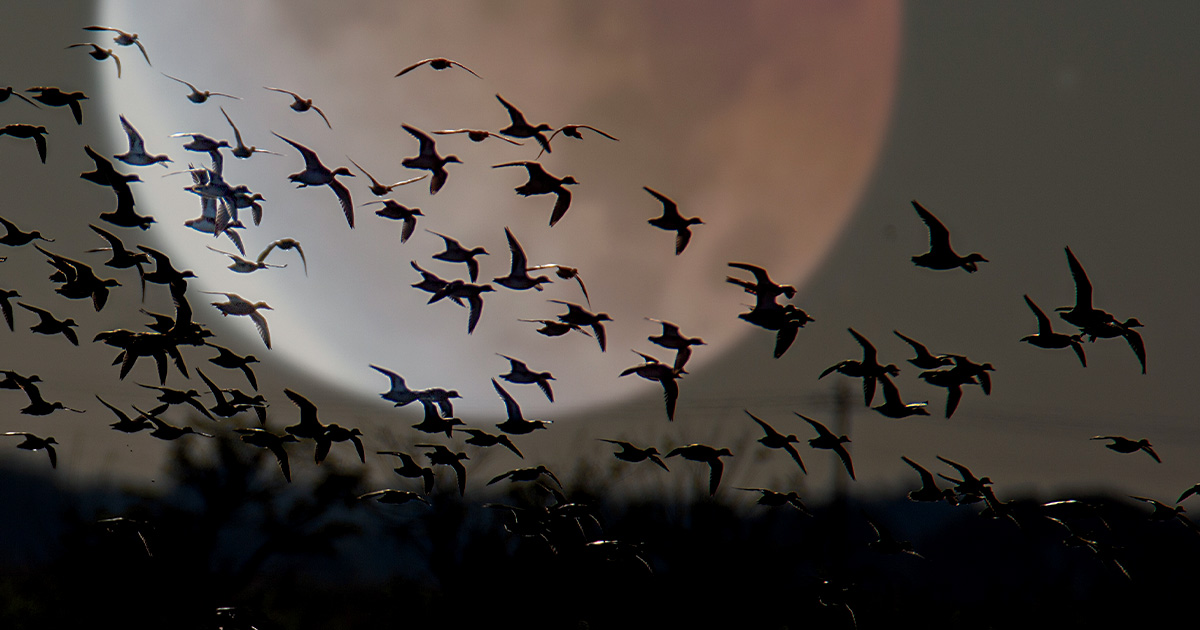
A full moon can trigger waterfowl migrations, but it can also cause tough hunting as birds become more active at night.
Tony Vandemore has a love-hate relationship with a full moon. The co-owner of Habitat Flats in north-central Missouri appreciates that large migrations of waterfowl often arrive during these periods, especially when accompanied by a timely cold front. But later in the season a full moon can make life miserable for waterfowlers, as it allows ducks and geese to feed at night and rest during the day.
“The full moon presents some challenges, and they differ a bit based on whether the weather is cold or warm,” Vandemore says. “If it’s cold, we might see some new birds arrive from the north, but we’ll also probably lose quite a few of the birds that we have in the area. If our temperatures are warm, ducks often start feeding at night. So, you might have an absolute pile of ducks in the area, but because they are moving primarily at night you never see them. It can be pretty frustrating.”
Any significant precipitation event can be enough to break nocturnal feeding patterns, Vandemore says, so when it rains or snows during a full moon period, it pays to be in the blind. But until the weather changes, he strives to keep hunting pressure to a minimum on birds in the area. “We try to avoid hunting anywhere close to where the birds are feeding. It seems that if we allow them to leave the field undisturbed, we’ll catch a few trickling back during legal shooting hours,” Vandemore says. “Running traffic on water holes between feeding areas and the roost is the best way to handle the situation, but even then, we only hunt places that have been rested for a few days. The birds tend to be very sensitive to hunting pressure during a full moon.”
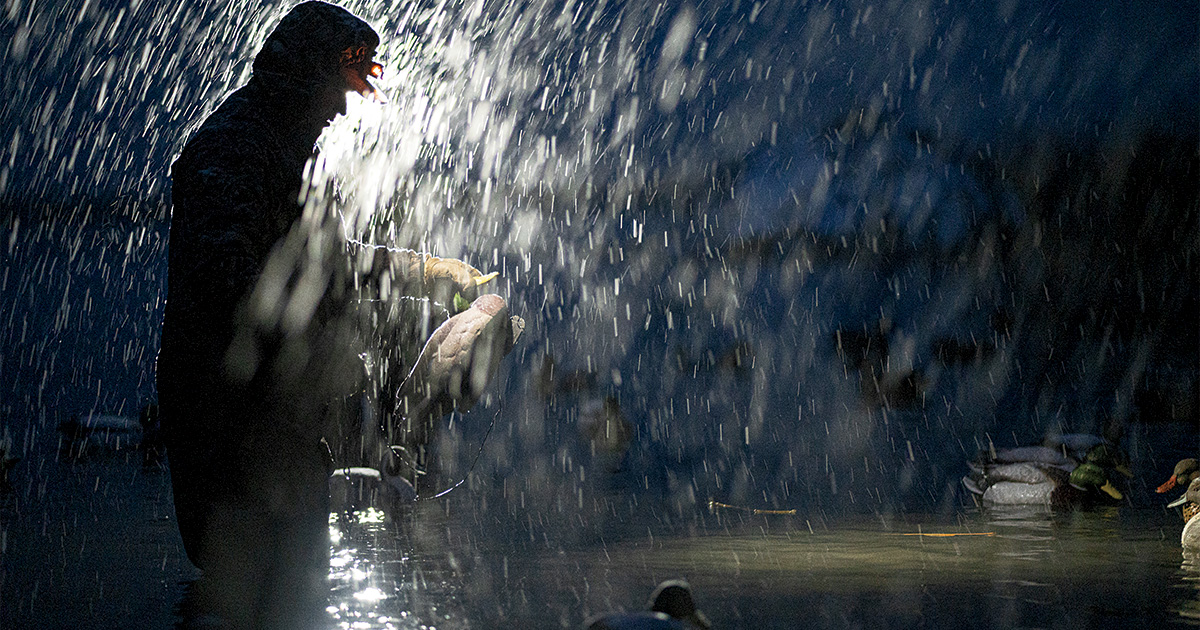
A freeze might shut down your hunting, but a thaw can trigger a reverse migration bringing new birds to your area.
Managing pressure is also important when freezing temperatures lock up open water, Vandemore adds, especially if hunters want to extend their season through a cold snap. “Pumping water and running ice eaters is great for keeping holes open for the decoys, but that’s not enough to create the open water needed to keep birds in an area. You need real birds to do that,” he says. “A handful of ice eaters doesn’t hold a candle to thousands of webbed feet churning the water, so it’s important to allow the birds to keep their roost water open to prevent them from picking up and heading south.”
That means not hunting near the roost or directly spooking birds off the roost, Vandemore advises. “When we find areas that are holding birds during a freeze, we only hunt those places in the middle of the day,” he says. “If the birds have a chance to get out, feed, and get back to the roost on their own, they’ll keep that water open. If they don’t, they will leave.”
In some cases, a period of freezing temperatures is followed immediately by a warming trend, and the resulting thaw can push a reverse migration of birds up from the south. “There aren’t too many situations better than a late-season thaw and a good south wind,” Vandemore attests. “When the birds start coming back up after a cold front, they are out searching for open water and food, and they tend to be very responsive to calling and decoys. That’s a day when I know I’m going to be in the blind.”
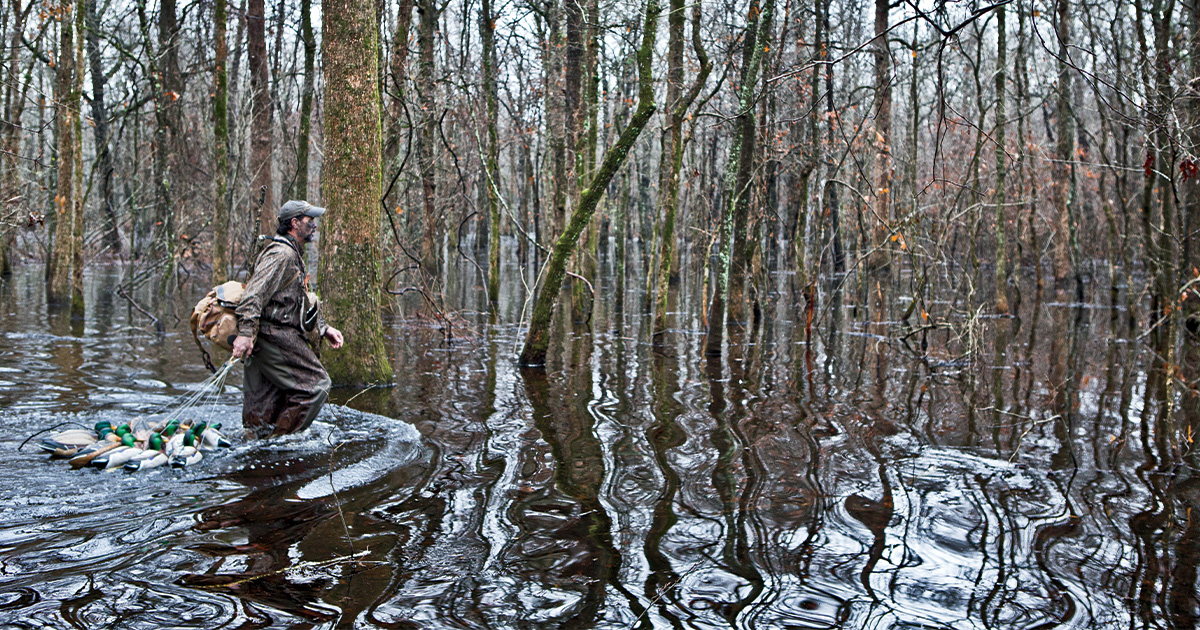
Late-season ducks will look for food and shelter in out-of-the-way places that can be difficult to access.
Flipped on its head, the old saying “if something looks like a duck and talks like a duck, it is probably a duck” could be used to accurately describe a pattern of behavior that mallards adopt late in the season in eastern Arkansas. “If your duck hole looks anything like a duck hole, then a late-season mallard in this part of the country is going to be pretty leery of it,” says Rusty Creasey, manager of the Coca Cola Woods duck club near Searcy. “These birds have been hunted for months. They are educated. And they are probably not coming anywhere close to the standard wide-open duck hole late in the season.”
The need for food and a place to rest remains, Creasey says, but in the final weeks of a season, mallards will widen the scope of the places they will utilize to fill those basic needs. And the out-of-the-way places that attract them typically aren’t on a hunter’s radar.
“And that’s the point. They are using tiny gaps in the timber to reach these blowdowns or thickets and other tight spots that have water and food and some underbrush,” Creasey says. “If you didn’t know better, you’d look at these spots and think, there’s no way a flock of mallards could get in there, but if they want to, they will find a way.”
When Creasey finds a concentration of ducks in one of these secluded spots, he is judicious about when he hunts them. “The gap in the trees that these ducks are using is often so small that there is only one way they can drop in,” he says. “If you don’t have the right wind and can wait, it’s probably best that you do.”
Creasey’s out-of-the-box approach to hunting late-season ducks extends to his decoy spread. “I’ve gone to using very few decoys later in the season. In fact, last year I had the most success not using any decoys at all, which sounds crazy, but that’s what worked. Calling and kicking water. That was it,” Creasey says. “And in terms of calling, I’ve discovered that you have to fine-tune your approach every day to match the ducks’ mood. One day they may want you to call them all the way to the water. The next day, less is more.”
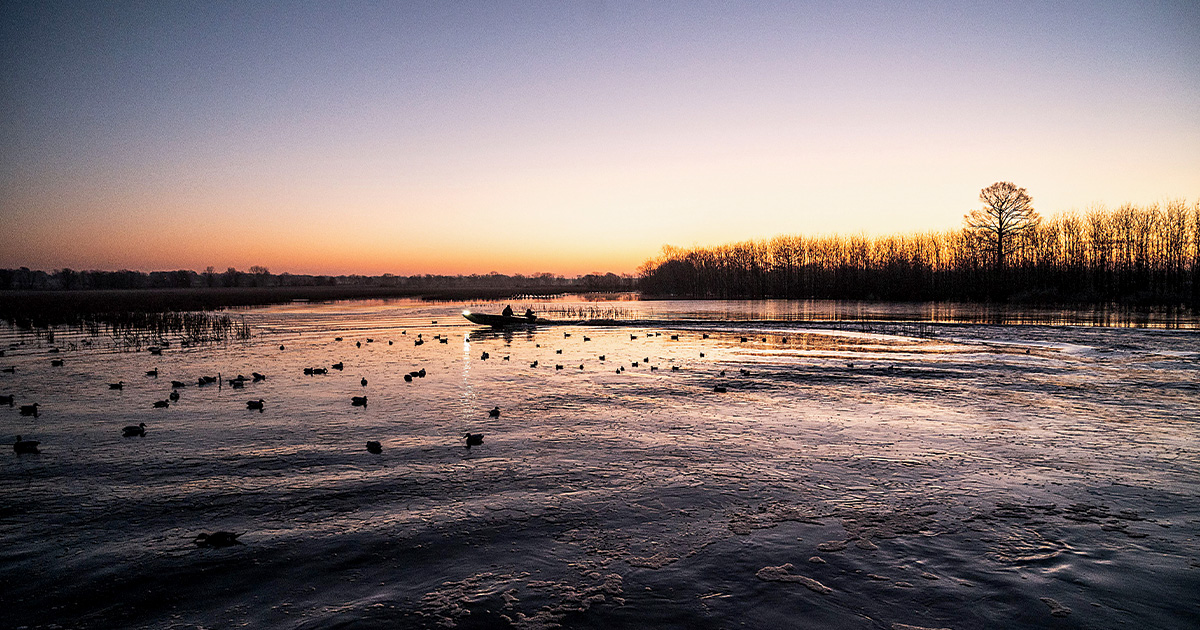
Ducks will often follow the water line, moving from place to place as water levels alter habitat conditions and food availability.
Late-season conditions may also include day-to-day changes in water levels in the timber and other floodplain habitats, Creasey notes, so it pays to stay informed about changing river levels in your area. “Whether you’re in the timber or the fields, these birds will be there, right on the edge, chasing that water as it expands,” he says. “The traditional areas that had been holding birds up until that point will suddenly be empty, so if you know where the water line is, you’re probably going to find the ducks.”
The opposite is also true, Creasey adds, noting that “follow the fall” is classic advice when river levels are dropping. “The water may fall out of the woods in your area one day, and the mallards will pick up and follow that water downstream until it finally bottoms out,” he says.
The challenges of the late season can make it a difficult time to hunt, Creasey admits, but overcoming those challenges is what makes it such a rewarding time of year to be in the field. “Even with the best plans, things don’t always work out, but one thing is certain—you can’t hunt them on the couch,” he says. “You’ve got to be out there and willing to adapt to what the birds are doing and the changes they are making. Feast or famine, it’s still hard to beat a day out duck hunting.”
Ducks Unlimited uses cookies to enhance your browsing experience, optimize site functionality, analyze traffic, and deliver personalized advertising through third parties. By continuing to use this site, you agree to our use of cookies. View Privacy Policy